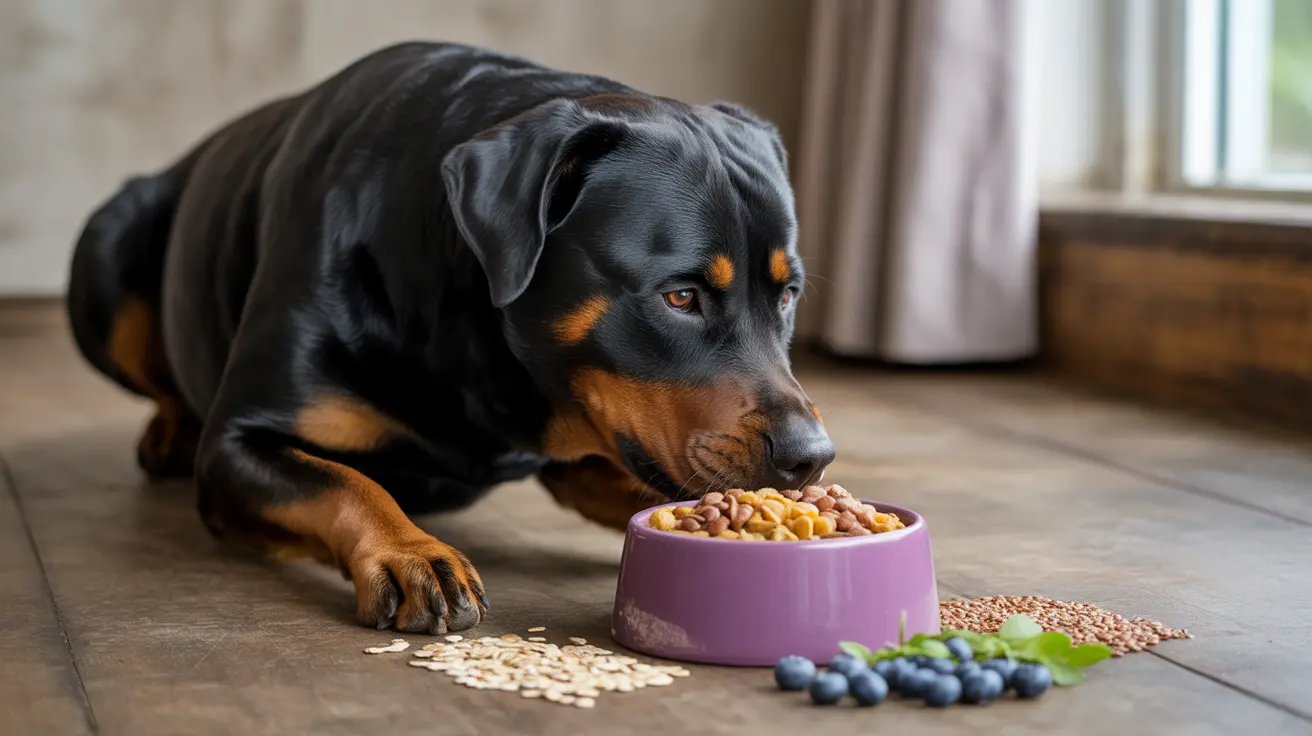Common Pet Food Myths Debunked: Science-Based Facts Every Pet Owner Should Know
As a devoted pet owner, you've likely encountered countless pieces of advice about what to feed your furry companions. From well-meaning friends sharing "insider tips" to flashy marketing campaigns promising revolutionary nutrition, the pet food industry is saturated with information that can be both helpful and harmful. Unfortunately, many widespread beliefs about pet nutrition are rooted in myth rather than scientific fact, potentially compromising your pet's health and wellbeing.
Understanding the difference between evidence-based pet nutrition and popular misconceptions is crucial for making informed decisions about your pet's diet. These common pet food myths debunked by veterinary science can help you navigate the complex world of pet nutrition with confidence, ensuring your beloved companions receive the balanced, species-appropriate nutrition they need to thrive throughout their lives.
In this comprehensive guide, we'll examine the most persistent pet food myths, reveal the scientific truths behind them, and provide you with the knowledge needed to make informed dietary choices for your dogs, cats, and other household pets.
The Grain-Free Diet Myth: Why Grains Aren't the Enemy
One of the most pervasive common pet food myths debunked by modern veterinary science concerns grain-free diets. Many pet owners have been led to believe that grains are harmful "fillers" that cause allergies and digestive issues in their pets. However, scientific evidence tells a very different story.
Pets Can Effectively Digest Grains
While uncooked grains are poorly digested by cats and dogs, most properly cooked grains in commercial pet foods are highly digestible. Through domestication, our pets have developed significant changes in digestive physiology, increasing their ability to digest starch compared to their wild ancestors. Dogs and cats can actually digest carbohydrates from grains with an efficiency greater than 90 percent.
Grains Provide Essential Nutrients
Contrary to popular belief, grains are not nutritionally empty "fillers." Grains such as wheat and corn contain 75 to 85 percent carbohydrates, primarily complex carbohydrates that are digested more slowly than simple sugars, providing sustained energy. They also provide fiber, vegetable proteins that complement meat proteins, essential fatty acids, minerals, and B vitamins.
Food Allergies and Grains: Setting the Record Straight
Studies have consistently shown that grains are not common causes of food allergies in pets. Research indicates that beef, dairy, and chicken proteins are the top allergens in dogs, with wheat ranking as only the fourth most common allergen. Food allergies account for a significantly smaller proportion of allergic skin diseases than environmental allergies or flea infestations.
The Hidden Truth About Grain-Free Diets
Perhaps most importantly, grain-free does not mean carbohydrate-free. These diets often include alternative carbohydrate sources like peas, sweet potato, or cassava. Additionally, the FDA has been investigating a potential link between grain-free diets and dilated cardiomyopathy (DCM) in atypical dog breeds, especially diets high in non-soy legumes and pulses.
Animal By-Products: Nutritional Powerhouses, Not Waste
Another widespread misconception involves animal by-products, which are often unfairly maligned as low-quality ingredients. This myth has led many pet owners to avoid foods containing these valuable nutritional components.
What Are Animal By-Products Really?
Animal by-products are edible parts of an animal not intended for or in excess of human consumption, such as internal organs. Importantly, by-products permitted in pet food must come from animals deemed fit for human consumption and slaughtered under veterinary supervision.
Superior Nutritional Value
By-products offer exceptionally high nutritional value, including nutrients that are deficient in skeletal muscle such as calcium, vitamins, and omega-3 fatty acids. These organ meats and cooked edible tissues are rich in protein, amino acids, vitamins, minerals, and fats, often proving more nutritious than muscle meat alone.
Environmental Sustainability
Using by-products increases sustainability by utilizing animal parts that would otherwise be wasted, reducing competition with the human food chain while lowering costs for pet owners.
The Raw Food Diet Reality Check
The BARF (Biologically Appropriate Raw Foods) diet has gained significant popularity among pet owners seeking to provide their animals with a "natural" diet. However, the scientific evidence surrounding raw diets reveals important considerations that every pet owner should understand.
Potential Benefits vs. Proven Risks
While proponents argue that raw diets mimic what cats and dogs would eat "in the wild," there is no objective scientific evidence demonstrating that feeding raw diets to otherwise healthy pets leads to better health outcomes compared to conventional diets. Conversely, there is ample evidence highlighting significant risks.
Bacterial Contamination Concerns
Raw food diets carry substantial risks of bacterial contamination, including antibacterial-resistant E. coli, salmonella, and other dangerous pathogens. These contaminated foods pose risks not only to pets but also to their human families, especially vulnerable individuals like young children, elderly family members, or those with compromised immune systems.
Nutritional Balance Challenges
There is also risk of gastrointestinal problems and injury from bones in raw diets, plus the possibility of nutritional deficiencies if the diet is not properly balanced. Many raw diet recipes found online lack nutritional adequacy and may pose toxicity risks.
Protein Sources: Debunking Meat vs. Meal Misconceptions
Many pet owners have been misled to believe that whole meat is superior to meat meal simply based on naming conventions. This represents one of the most common pet food myths debunked by understanding food processing and nutritional science.
The Truth About Meat Meal
Meat meal is actually a more concentrated source of protein because it doesn't contain the water content of whole meat. This allows manufacturers to include greater quantities in dry foods to achieve higher protein content than would be possible with whole meat alone, due to manufacturing machinery limitations regarding water content.
Quality Depends on Source, Not Form
As with all ingredients, the origin determines quality rather than the processing method. Meat meal from well-known providers can be an excellent source of protein, just like whole meat from quality sources. The key is selecting foods from reputable manufacturers who stand behind their products with feeding trials and scientific evidence.
Marketing Terms vs. Scientific Facts
The pet food industry is filled with appealing marketing terms that may influence purchasing decisions without providing meaningful information about nutritional quality.
"Premium," "Holistic," and "Natural" Labels
Terms like "premium," "holistic," and "natural" often have little to no regulatory meaning. "Holistic" is functionally meaningless from a regulatory standpoint, while "premium" is unlegislated and offers no quality indication. "Natural" ingredients must meet certain processing standards, but the term on packaging is often unregulated.
"Human-Grade" and "Hypoallergenic" Claims
"Human-grade" is ambiguous but appeals to pet owners, while "hypoallergenic" generally has no clear meaning unless the food contains proteins hydrolyzed below the molecular weight of common allergens.
Species-Specific Nutritional Needs
Understanding the fundamental differences between various pet species is crucial for providing appropriate nutrition.
Dogs as Omnivores
Dogs are omnivores, capable of digesting both animal and plant-derived nutrients efficiently. This evolutionary adaptation allows them to thrive on balanced diets that include both protein sources and carbohydrates.
Cats as Obligate Carnivores
Cats are obligate carnivores, meaning their diets should prioritize animal-based ingredients to meet their unique nutritional requirements, including essential amino acids like taurine that are found primarily in animal tissues.
Safe Food Handling and Preparation Guidelines
Whether preparing homemade meals or handling commercial foods, proper food safety practices are essential for protecting both pets and their human families.
Commercial Diet Advantages
Commercial diets labeled as "complete" meet established nutritional guidelines and provide all essential nutrients. Larger manufacturers typically conduct feeding trials and nutritional analyses, providing additional assurance of quality and safety compared to smaller companies that may lack comprehensive testing protocols.
Professional Guidance for Homemade Diets
While homemade diets can be beneficial when properly balanced, they are challenging to prepare in a nutritionally complete manner. Unless formulated by a board-certified veterinary nutritionist, homemade diets are likely to be nutritionally unbalanced and may lead to deficiencies in calcium, trace minerals, and essential vitamins.
Frequently Asked Questions
Are grain-free diets healthier for my pet?
No scientific evidence supports grain-free diets being healthier for most pets. In fact, the FDA is currently investigating a potential link between grain-free diets and dilated cardiomyopathy (DCM) in dogs, particularly diets high in legumes and pulses. Grains provide valuable nutrients including complex carbohydrates, fiber, protein, and essential vitamins.
Should I avoid pet foods with animal by-products?
No, animal by-products are actually nutritional powerhouses that provide essential nutrients often lacking in muscle meat alone. By-products include organ meats rich in vitamins, minerals, amino acids, and healthy fats. They must come from animals deemed fit for human consumption and are more sustainable than using only muscle meat.
Is raw food better for my pet than commercial kibble?
There is no scientific evidence that raw diets provide health benefits over properly formulated commercial diets. Raw diets carry significant risks including bacterial contamination with E. coli and salmonella, potential nutritional imbalances, and safety hazards for both pets and humans in the household.
How can I tell if a pet food is high quality?
Quality cannot be determined from ingredient lists or marketing terms alone. Look for foods from reputable manufacturers who conduct feeding trials, provide nutritional analyses, and have veterinary nutritionists on staff. Consult with your veterinarian to choose diets appropriate for your pet's life stage, activity level, and health status.
Are homemade diets safer than commercial pet food?
Not necessarily. While homemade diets can be beneficial when properly balanced, they are challenging to formulate correctly and often lack nutritional completeness. Many online recipes are nutritionally inadequate and may pose toxicity risks. Professional guidance from a veterinary nutritionist is essential for safe homemade diet preparation.
Do pets need grain-free diets if they have food allergies?
Most food allergies in pets are caused by protein sources like beef, dairy, and chicken rather than grains. Wheat ranks only as the fourth most common allergen in dogs. If your pet has confirmed food allergies, work with your veterinarian to identify specific problem ingredients through elimination trials rather than assuming grains are the culprit.
What should I look for when choosing a pet food manufacturer?
Choose manufacturers who conduct feeding trials, employ veterinary nutritionists, provide transparent nutritional information, and have quality control measures in place. Larger, established companies often have more resources for research and testing compared to smaller manufacturers who may lack comprehensive quality assurance programs.
Conclusion
Navigating the world of pet nutrition doesn't have to be overwhelming when you're armed with science-based facts rather than marketing myths. By understanding these common pet food myths debunked by veterinary research, you can make informed decisions that truly benefit your pet's health and wellbeing.
Remember that the best approach to pet nutrition involves consulting with qualified veterinary professionals who can provide personalized recommendations based on your pet's individual needs, life stage, and health status. Quality nutrition is one of the most important investments you can make in your pet's long-term health, and separating fact from fiction is the first step toward providing the exceptional care your beloved companion deserves.





